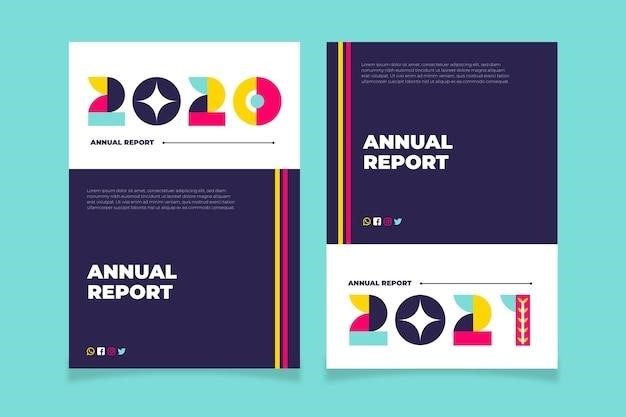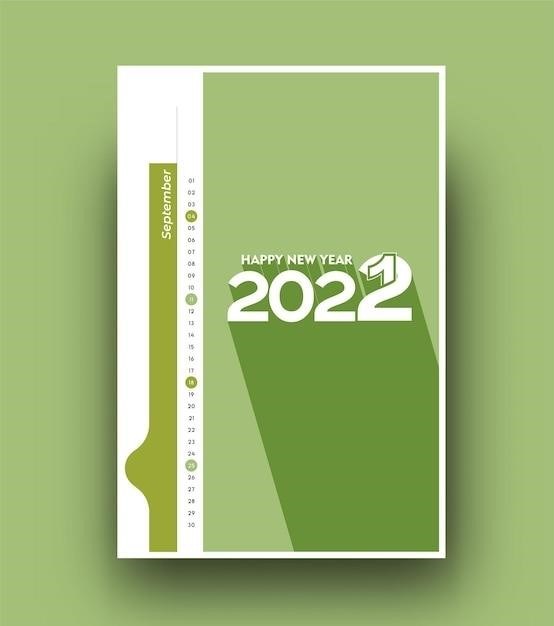RAI Manual 2023 PDF⁚ A Comprehensive Guide
This guide provides a comprehensive overview of the Resident Assessment Instrument (RAI) Manual, focusing on versions 1.18.11 and 1.19.1. It details key changes, the IMPACT Act’s influence, access methods, and navigating the manual’s structure and content. The guide also covers effective dates and implementation timelines for updates.
Version 1.18.11 and its Significance
The Minimum Data Set (MDS) 3.0 Resident Assessment Instrument (RAI) Users Manual, version 1.18.11, represents a substantial update effective October 1, 2023. This version incorporates significant revisions mandated by the Improving Medicare Post-Acute Care Transformation Act of 2014 (IMPACT Act). The IMPACT Act necessitates standardized assessment items across various post-acute care (PAC) settings, leading to considerable changes within the manual. Version 1.18.11 reflects CMS’s commitment to improving data collection consistency and quality across different PAC facilities, such as skilled nursing facilities and swing bed facilities. The updated manual ensures that all participating facilities adhere to the same assessment standards, facilitating better data analysis and informed decision-making. This version also includes updated coding examples, revised skip patterns, and a restructuring of certain sections, aiming to streamline the assessment process and enhance clarity for users. The release of version 1.18.11 marked a critical step towards a more unified and efficient approach to resident assessment in long-term care, significantly impacting the data collected and utilized for quality reporting and care planning. Accessibility of this version was crucial, with CMS making it available for download on their official website and through other authorized channels. Understanding the implications of version 1.18.11 is vital for all professionals involved in resident assessment within the specified healthcare settings.
Key Changes Introduced in Version 1.18.11
Version 1.18.11 of the MDS 3.0 RAI Manual introduced several key modifications, primarily driven by the IMPACT Act’s requirements for standardized assessments across post-acute care settings. Significant revisions included updates to coding examples and revised skip patterns to improve the efficiency and clarity of the assessment process. The restructuring of sections, including the removal of Section G and the integration of relevant portions into Section GG, aimed to enhance the user experience and logical flow of information. New assessment areas were also introduced, focusing on discharge planning, encompassing how different care settings share patient documents upon release. The inclusion of assessments related to transportation needs and social isolation reflects a broader approach to holistic resident care. Furthermore, the updated manual clarified requirements for submission timeframes and the necessary RN signature for completed assessments, ensuring compliance and accountability. These changes aimed to streamline data collection, improve data quality, and ultimately enhance the accuracy and effectiveness of resident care planning. The updated manual also included errata addressing previously identified inconsistencies or errors, ensuring the accuracy and reliability of the information provided. The combination of these improvements showcases a significant step forward in standardizing the RAI process across various facilities and healthcare settings.
Impact of the IMPACT Act on the RAI Manual
Understanding the MDS 3.0 RAI Manual Structure
The MDS 3.0 RAI Manual, available as a PDF, is structured to facilitate efficient navigation and data retrieval. The manual is organized into distinct chapters, each addressing specific aspects of resident assessment. These chapters delve into detailed instructions for completing the RAI, offering guidance on coding, interpretation, and the overall assessment process. Appendices provide supplemental information, including definitions, coding examples, and state-specific contact details. Comprehensive change tables meticulously document revisions between versions, allowing users to readily identify updates and their implications. The structure incorporates a logical flow, guiding users through the assessment steps systematically. Cross-referencing within the manual enhances the user experience, enabling easy access to related information. Furthermore, the digital format, readily downloadable as a PDF, offers features like searchability and the ability to bookmark key sections, significantly improving the accessibility and usability of the comprehensive document. This structured approach ensures that users can efficiently locate the necessary information to conduct accurate and compliant resident assessments.

Accessing and Downloading the RAI Manual
The official CMS website provides direct download links for the RAI Manual PDF. Alternative sources may offer access, but using the official website ensures you have the most up-to-date and accurate version.
Official CMS Website and Download Links
The Centers for Medicare & Medicaid Services (CMS) is the primary source for the official Minimum Data Set (MDS) 3.0 Resident Assessment Instrument (RAI) Manual. Their website serves as the central repository for all versions, updates, and supplementary materials. Navigating to the designated section, usually found under a “Downloads” or “Publications” tab, will reveal various versions available for download, including the crucial versions 1.18.11 and 1.19.1, effective October 1, 2023, and October 1, 2024, respectively. These downloads are typically in PDF format, allowing for easy access and printing. The website often includes detailed instructions on how to locate and download the correct version. Make sure to check the date of the document to ensure you’re downloading the most current edition to guarantee accurate and updated information. It’s recommended to bookmark the relevant CMS page to easily access future updates and revisions of the RAI Manual. This centralized approach prevents confusion and ensures compliance with the latest regulatory requirements. Always verify the authenticity of any downloaded document by confirming its origin directly from the CMS website, and remember that other websites might offer links but may not always provide the most up-to-date version.
Alternative Sources and Third-Party Access
While the official CMS website is the recommended source for the RAI Manual, several third-party websites and organizations may offer access to the document. These sources often provide links to the CMS downloads or may host copies of the manual themselves. However, exercise caution when using unofficial sources. Always verify the version number and date to ensure it aligns with the latest official release from CMS. Outdated or incorrectly modified versions can lead to non-compliance and potential errors in assessment. Reputable healthcare industry associations and professional organizations may also provide links or summaries of the RAI Manual’s contents, offering additional context and interpretation. These organizations can be valuable resources for clarifying specific aspects of the manual, but they should not be considered replacements for the official CMS document. Always cross-reference information found on third-party sites with the official CMS version to avoid inaccuracies. Before relying on any information from an unofficial source, carefully evaluate the website’s credibility and the source of its information. The official CMS website remains the ultimate authority on the contents and validity of the RAI Manual.
Navigating the Manual’s Contents and Chapters
The RAI Manual is a comprehensive document, and effectively navigating its contents is crucial for proper use. The manual is typically organized into sections and chapters, each addressing specific aspects of the resident assessment process. A table of contents or index is usually provided at the beginning, facilitating quick access to particular sections. Use this index to efficiently locate the information you need. Within each chapter, subsections are often further broken down, logically structuring the information. Pay close attention to headings, subheadings, and bolded terms to understand the hierarchy of information and to quickly locate key concepts. Many versions include cross-references, linking related information across different chapters. Take advantage of these links for a more comprehensive understanding of interconnected topics. If a PDF version is used, utilize the document’s search function (usually Ctrl+F or Cmd+F) to find specific keywords or phrases. Remember that updates and errata are frequently issued; ensure you are using the most current version. Familiarize yourself with the overall structure and key terminology before attempting to complete assessments using the manual. A thorough understanding of the manual’s layout will significantly improve efficiency and accuracy.

Understanding the Updates in Version 1.19.1
Version 1.19.1 of the RAI Manual, effective October 1, 2024, includes substantial revisions. These changes build upon 1.18.11, incorporating further refinements and potentially addressing user feedback and evolving regulatory requirements.
Changes from Version 1.18.11 to 1.19.1
Transitioning from version 1.18.11 to 1.19.1 of the MDS 3.0 RAI Manual signifies a notable evolution in the assessment process for long-term care facilities. While specific details regarding the alterations require direct examination of both versions, the available information suggests a focus on refinement and enhancement. The updates likely address user feedback gathered after the implementation of version 1.18.11, incorporating clarifications, corrections, and improvements to the overall usability and clarity of the manual. This iterative process reflects CMS’s commitment to refining the RAI system to ensure its effectiveness and efficiency in data collection. The changes might encompass modifications to coding structures, assessment procedures, or reporting mechanisms. It is crucial to consult the official documentation provided by CMS to fully grasp the extent and implications of the changes between these two versions. Furthermore, understanding the rationale behind these modifications is key to a smooth transition and accurate implementation within facilities. The changes are likely designed to streamline workflows and improve the quality of data collected, ensuring accurate reflection of residents’ needs and facilitating better care planning.
Effective Dates and Implementation Timeline
The Minimum Data Set (MDS) 3.0 Resident Assessment Instrument (RAI) Manual undergoes periodic updates, each with a specific effective date and implementation timeline. Version 1.18.11, for instance, became effective on October 1, 2023. This date marks the point at which all facilities were required to adopt the updated guidelines and procedures outlined in the manual. A transition period might have been allowed, allowing for staff training and system adjustments before full implementation. The subsequent version, 1.19.1, is noted to be effective starting October 1, 2024. This suggests a yearly update cycle, though the exact frequency may vary. Facilities need to carefully monitor announcements from the Centers for Medicare & Medicaid Services (CMS) to stay informed about upcoming revisions and their implementation schedules. Thorough review of the updated manual is crucial to ensure compliance and accurate data reporting. Failure to comply with the effective dates can lead to penalties. The implementation timeline usually involves a period for disseminating information, providing training resources, and offering technical support to assist facilities in adapting to the new version. Therefore, proactive engagement and planning are crucial for a smooth transition and adherence to regulatory requirements.
Key Features and Improvements in Version 1.19.1
While the provided text mentions the existence of version 1.19.1 and its October 1, 2024 effective date, specific details about its features and improvements are limited. However, based on the general context and the iterative nature of RAI manual updates, we can infer potential enhancements. Version 1.19.1 likely incorporates clarifications to address ambiguities or inconsistencies found in version 1.18.11. It may also reflect adjustments based on feedback from healthcare providers regarding the practical application of the previous version. Further improvements might include refined coding instructions, streamlined processes for data entry, or updated guidance on specific assessment areas to enhance accuracy and efficiency. The inclusion of new assessment items or modifications to existing ones to better align with evolving healthcare practices and regulatory changes is also probable. Given the emphasis on the IMPACT Act, version 1.19.1 might refine the integration of standardized assessment items across post-acute care settings. Moreover, it could include enhanced reporting capabilities or tools to facilitate data analysis and quality improvement initiatives. Finally, updates to the manual’s structure or organization to enhance user-friendliness are also possible. To gain precise details on the specific features and improvements, referring directly to the official CMS documentation for version 1.19.1 is essential.